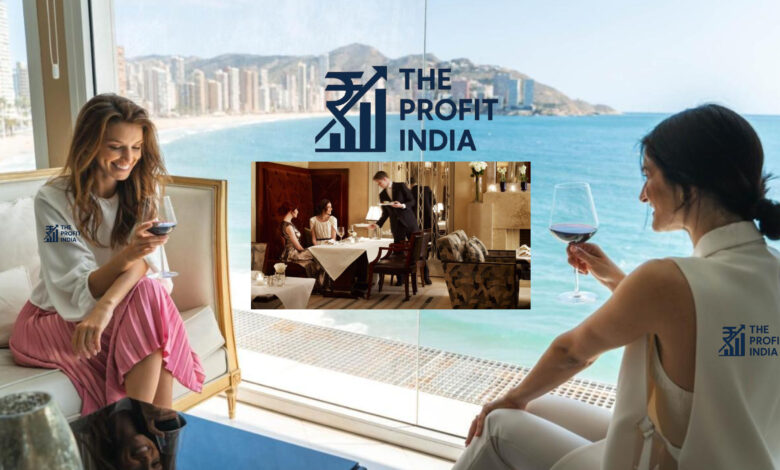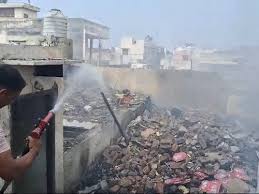From 1-Star to 5-Star: Hotel Rating System and What It Costs, 37 Points

🏨 Star Ratings of Hotels: Financial Impact, Who Decides & Global Rankings (2025)
Understand how hotels get 3, 5, or 7-star ratings, what they cost, who certifies them in India and abroad, and which cities lead globally in luxury stays.
1. What Are Hotel Star Ratings?
-
Star ratings classify hotels by luxury, service, and amenities.
-
Common scale: 1-star (basic) to 5-star (luxury).
-
7-star hotels are not officially recognized—used only for marketing appeal.
-
E.g., Burj Al Arab (Dubai) is often called 7-star but officially rated 5-star.
-
Milan’s Seven Stars Galleria got its 7-star status from a private certifier (SGS), not a government.
-
2. Who Gives Star Ratings?
A. In India
-
Ratings are assigned by the Ministry of Tourism through HRACC (Hotel & Restaurant Approval & Classification Committee).
-
Classification is voluntary but helps hotels qualify for incentives, promotions, and business advantages.
-
Recently, India proposed allowing third-party agencies to assess and certify hotels.
B. In Other Countries
-
Europe: Uses a common framework by the Hotelstars Union (mandatory & optional criteria).
-
UK: Bodies like AA, VisitEngland certify hotels.
-
South Africa: Handled by Tourism Grading Council of South Africa (TGCSA).
-
Global systems vary — no universal standard.
3. Star Rating Types in India vs Abroad
-
India’s official star types:
-
1-star to 5-star
-
5-Star Deluxe (highest formal category)
-
Separate rating for Heritage Hotels (Basic, Classic, Grand)
-
-
Other countries:
-
Use 1 to 5-star scales (some add “Superior” or “Deluxe”).
-
Some ratings are mandatory, others voluntary.
-
-
7-Star label is unofficial globally, used by some luxury hotels for branding.
4. How Do Hotels Get a Star Rating?
A. In India
-
Hotels apply via NIDHI+ portal.
-
HRACC conducts physical inspections covering ~108 sub-criteria.
-
Criteria include room size, facilities, safety, service, environmental practices.
-
Ratings must be displayed at reception and online.
B. Other Countries
-
Use points systems, mandatory checklists, and audits by certified bodies.
5. What Do Hotels Need for 5-Star or Deluxe Rating in India?
| Area | Requirements | Financial Impact |
|---|---|---|
| 🛏️ Rooms | Spacious rooms, external windows, premium furniture, suites | High capital cost (CapEx) |
| 🧯 Safety | Fire exits, alarms, CCTV, smoke detectors | Ongoing maintenance (OpEx) |
| 🏊 Facilities | Pool, gym, spa, concierge, 24/7 service | Staff salaries, utility bills |
| ☕ In-room Services | Coffee machine, minibar, toiletries, TV, Wi-Fi | Adds to room cost, boosts revenue potential |
| 🌱 Eco Compliance | STP, rainwater harvesting, LED lighting | Initial cost, long-term savings |
-
Staff qualifications and multilingual service also mandatory.
6. 🔝 Cities with the Most 5-Star Hotels (2025)
Clarified: These are cities, not countries, with the highest number of 5-star hotels worldwide.
| Rank | City | No. of 5-Star Hotels | Key Reasons |
|---|---|---|---|
| 1 | Istanbul, Turkey | ~201 | Historic + luxury tourism hub |
| 2 | Shanghai, China | ~201 | Business + domestic tourism |
| 3 | Bangkok, Thailand | ~200 | Popular international tourist spot |
| 4 | London, UK | ~162 | Business + luxury travelers |
| 5 | Dubai, UAE | ~133 | Iconic 5-star brands & real estate push |
| 6 | Manila, Philippines | ~127 | Growing luxury segment |
| 7 | Paris, France | ~116 | Cultural + romantic travel |
| 8 | Beijing, China | ~112 | Domestic + inbound tourism |
| 9 | Mexico City, Mexico | ~88 | Business + cultural travel |
| 10 | Batumi, Georgia | ~86 | Emerging luxury coastal hub |
7. Is 7-Star a Real Category?
-
No official 7-star rating exists under any global or Indian government classification.
-
“7-star” is a marketing term, used to signify ultra-luxury (e.g., Burj Al Arab).
-
Only one hotel (Seven Stars Galleria, Milan) claims formal 7-star certification, by private firm SGS.
8. Financial Impact of Higher Star Ratings
A. Costs Involved
-
CapEx (Capital Expenditure):
-
Bigger rooms, elevators, design, eco systems
-
Can range from ₹5 Cr to ₹500+ Cr depending on scale
-
OpEx (Operating Costs):
-
Staff-to-room ratios, energy, pool/gym upkeep, guest services
-
Can be ₹10–50 lakh+ monthly
B. Revenue Upside
-
Higher ADR (Average Daily Rate):
-
5-star hotels charge 2x to 5x more than 3-star
-
Luxury hotels can charge ₹10,000–₹1,00,000/night in metros
-
Occupancy Dependency:
-
High fixed costs → needs 60–80% occupancy to stay profitable
-
Incentives:
-
Some states/countries offer subsidies, tax incentives for high-end, eco-compliant hotels
9. Key Differences & Challenges in Ratings
-
No global standard:
-
Criteria vary across countries
-
“5-star” in one country may equal “4-star” in another
-
India: Classification is voluntary, many hotels operate unclassified
-
Legal limitations: Liquor laws, land laws, building norms vary state to state
-
7-star misuse: Used loosely for branding, misleads customers sometimes
10. Summary – Key Takeaways
-
In India, 5-star Deluxe is the highest official rating.
-
HRACC under Ministry of Tourism certifies hotel stars.
-
A hotel must meet strict criteria in room size, safety, service, facilities.
-
7-star is not officially recognized anywhere in the world.
-
Cities like Istanbul, Shanghai, Bangkok, London, Dubai top global charts in 5-star hotels.
-
Financially, higher rating = higher investment but also higher revenue potential.
⚠️ Disclaimer – The Profit India
This article is for informational purposes only. Readers are advised to verify with official sources before making any business, legal, or financial decisions.





